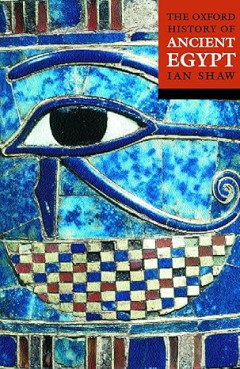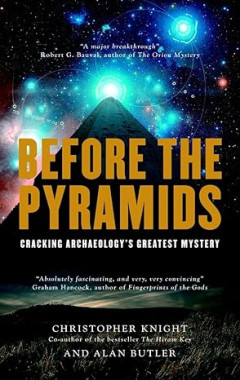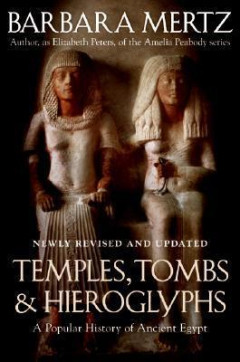Ditapis dengan
E-book Egyptian Things : Translating Egypt to Early Imperial Rome
The Temple of Dendur stands grandly in New York’s Metropolitan Museum of Art (fig. 1). Reflecting pools and cool tan-marble floors stylishly evoke the Nile and its surroundings; an enormous semi-translucent ceiling remains a relic of 1970s mod-ernism; a vast wall of glass looks out to Central Park and E. Eighty-Fourth Street. All frame the Egyptian temple’s relocation to the former Sackler …
- Edisi
- -
- ISBN/ISSN
- 9780520402195
- Deskripsi Fisik
- 261 hlm
- Judul Seri
- -
- No. Panggil
- 732.8 KEL e

E-book The Oxford History of Ancient Egypt
The Oxford History of Ancient Egypt uniquely covers 700,000 years of ancient Egypt, from c. 700,000 BC to AD 311. Following the story from the Egyptians' prehistoric origins to their conquest by the Persians, Greeks, and Romans, this book resurrects a fascinating society replete with remarkable historical information. It investigates such subjects as the changing nature of life and death in the…
- Edisi
- -
- ISBN/ISSN
- 9780192804587
- Deskripsi Fisik
- 550 halaman, ilus.
- Judul Seri
- -
- No. Panggil
- 932 SHA t

E-book Before the Pyramids: Cracking Archaeology's Greatest Mystery
Were the pyramids of the pharaohs conceived in Britain? The acclaimed coauthors of Civilization One think so, and they take readers on a gripping excursion into ancient religion and astronomy. Knight and Butler not only establish the existence of an advanced civilization with astonishing, almost modern knowledge, but they also explain how the oldest Neolithic monuments--the henges of North York…
- Edisi
- -
- ISBN/ISSN
- 9781907486661
- Deskripsi Fisik
- 252 halaman
- Judul Seri
- -
- No. Panggil
- 932 KNI b

E-book Egyptian Mythology: Gods, Pharaohs and Book of the Dead of Egyptian My…
From at least 4000 BCE to the death of Cleopatra VII in 30 CE, Egyptian Mythology was the foundation of ancient Egyptian culture. Spanning over large dominions as distant as the Roman Empire and the Greco-Roman realm, Egyptian mythology was a prevailing entity. Goddesses like Isis were worshiped not only by the natives of Egypt but also those of England and Afghanistan.
- Edisi
- -
- ISBN/ISSN
- -
- Deskripsi Fisik
- 80 halaman, ilus.
- Judul Seri
- -
- No. Panggil
- 932 WEA e

E-book Temples, Tombs, and Hieroglyphs: A Popular History of Ancient Egypt
A fascinating chronicle of an extraordinary epoch—from the first Stone Age settlements through the reign of Cleopatra and the Roman invasions—Temples, Tombs, and Hieroglyphs brings ancient Egypt to life as never before. Lavishly illustrated with pictures, maps, photographs, and charts, it offers tantalizing glimpses into Egyptian society and everyday life; amazing stories of the pharaohs an…
- Edisi
- -
- ISBN/ISSN
- -
- Deskripsi Fisik
- 371 halaman
- Judul Seri
- -
- No. Panggil
- 722.2 MER t
E-book How Pharaohs Became Media Stars: Ancient Egypt and Popular Culture
New media and its enormous diffusion in the last decades of the 20th century and up to the present has greatly increased and diversified the reception of Egyptian themes and motifs and Egyptian influence in various cultural spheres. This book seeks to provide new evidence of this interdisciplinarity between Egyptology and popular culture.
- Edisi
- -
- ISBN/ISSN
- 9781803276274
- Deskripsi Fisik
- 260 halaman, ilus.
- Judul Seri
- -
- No. Panggil
- 932 PIC h
 Karya Umum
Karya Umum  Filsafat
Filsafat  Agama
Agama  Ilmu-ilmu Sosial
Ilmu-ilmu Sosial  Bahasa
Bahasa  Ilmu-ilmu Murni
Ilmu-ilmu Murni  Ilmu-ilmu Terapan
Ilmu-ilmu Terapan  Kesenian, Hiburan, dan Olahraga
Kesenian, Hiburan, dan Olahraga  Kesusastraan
Kesusastraan  Geografi dan Sejarah
Geografi dan Sejarah